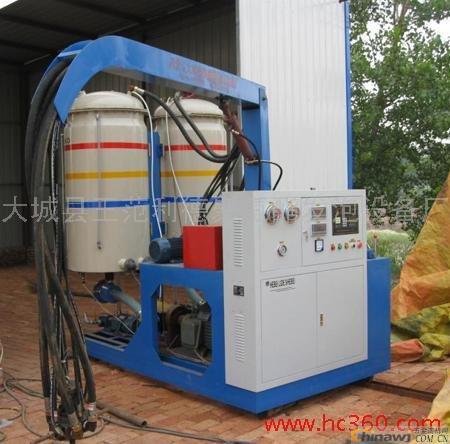High-pressure and low-pressure foaming machines differ significantly in terms of cost, performance, and environmental impact. The high-pressure foaming machine is generally more expensive due to its advanced technology and precision engineering, while the low-pressure version is more affordable and easier to manufacture, even in China. Both types are designed for efficient material mixing, but they exhibit different characteristics in foam quality and insulation performance.
The high-pressure foaming machine offers excellent mixing efficiency, resulting in a stable and uniform cell structure in the foam, which leads to superior insulation properties. However, it requires high pressure (120–200 bar) during the mixing process, making it more complex to operate. Additionally, cleaning can be challenging because of the large internal space in the mixing chamber, leading to residual materials that may require solvents like chlorofluorocarbons (CFCs), which are harmful to the environment.
On the other hand, the low-pressure foaming machine has lower mixing efficiency, which can result in uneven foam distribution and less effective insulation. While it is easier to manage and start up, it often leaves more residue, requiring more raw material to compensate—about 5–10% more than the high-pressure system. This also makes it harder to maintain a clean working environment, affecting product quality over time.
Another key difference is the occurrence of late foaming. High-pressure machines typically avoid this issue due to better mixing, whereas low-pressure systems may experience it, leading to inconsistent results. Moreover, low-pressure foaming machines have been banned in some regions, such as Europe, due to their environmental impact and inefficiency.
In terms of automation, high-pressure foaming systems are more suitable for integration into automated production lines, ensuring consistent output and reducing labor costs. In contrast, low-pressure machines are less compatible with automation and require more manual oversight.
Overall, the choice between high-pressure and low-pressure foaming machines depends on factors like budget, required product quality, environmental considerations, and production scale. For companies looking for long-term durability and eco-friendly solutions, high-pressure machines are often the preferred option.
http://news.chinawj.com.cn
 Submission:
Submission:

 Submission:
Submission:

DBB MONOFLANGE Needle Valve,Floating Ball Valve,Dual Plate Check Valve,Through Conduit Gate Valve,
CEPAI Group Co., Ltd. , https://www.jscepai.com
